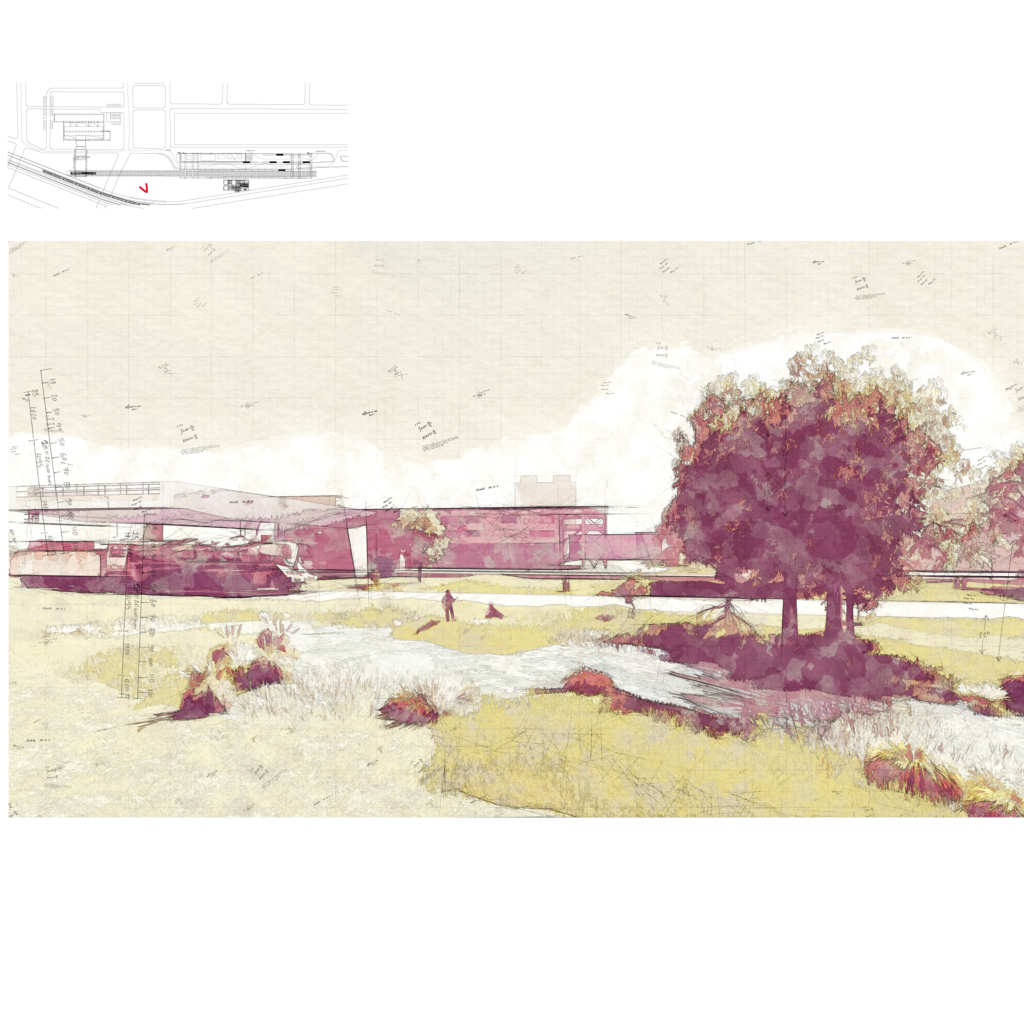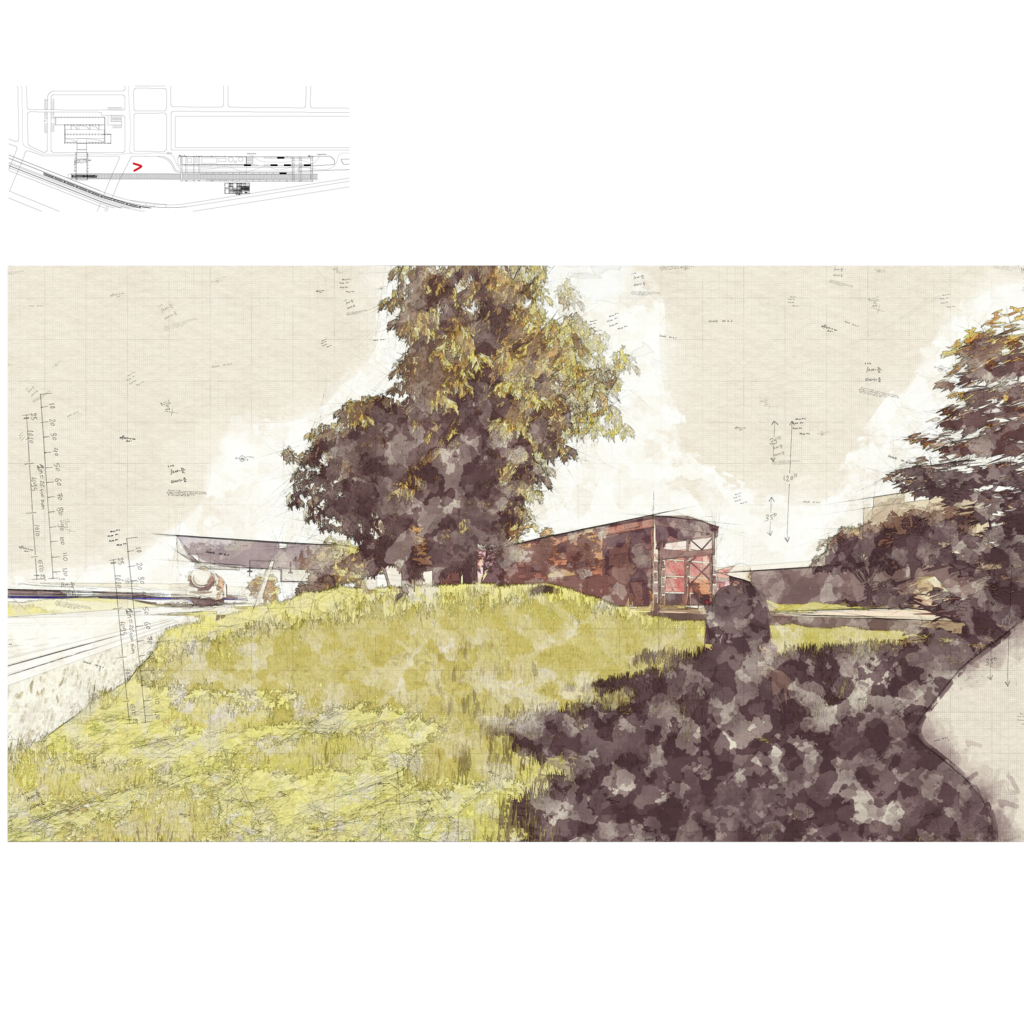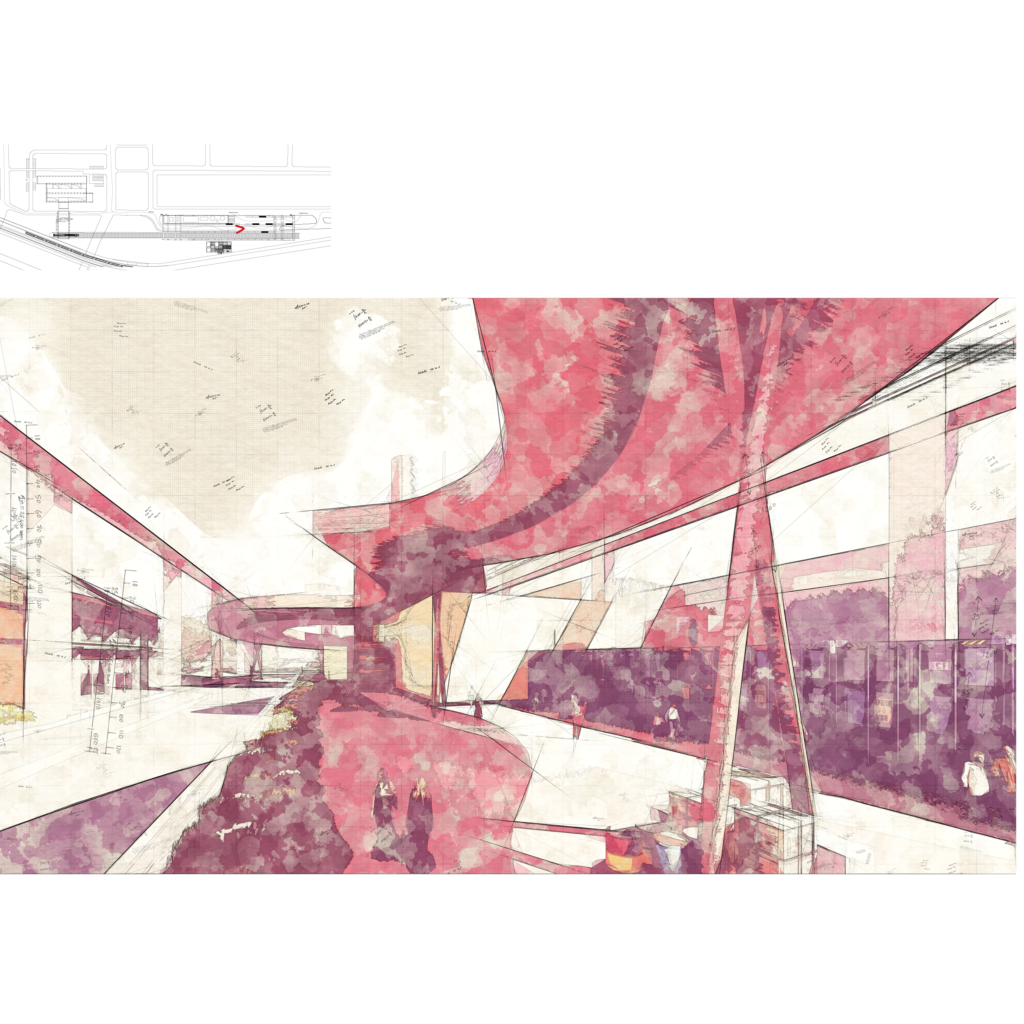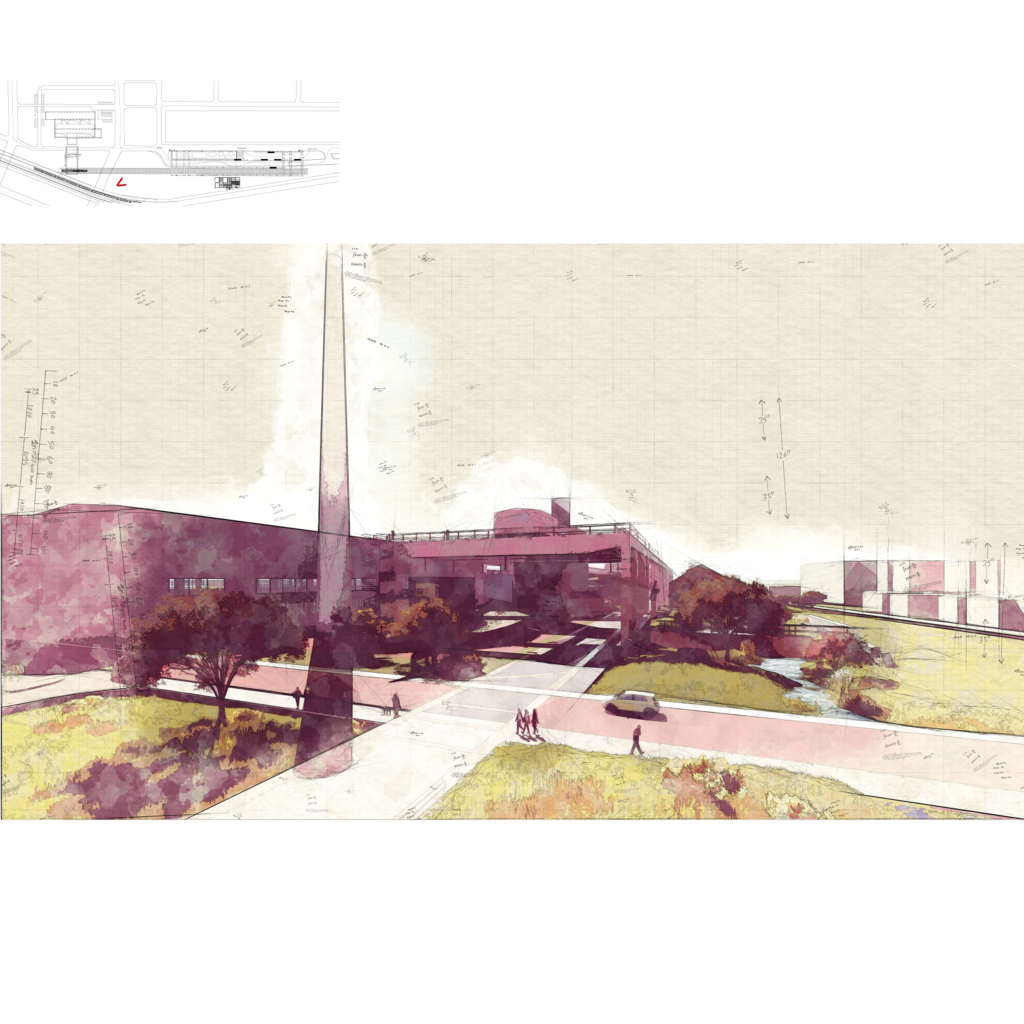Discussion
Architecture follows landscape

It has been a long journey that I choose forest typology as the primary tool to understand the complex system in the built environment. The landscape’s vertical layering and flat terrain deepen my understanding of the ecosystem, whether it’s for an ecological world or just, architectural world. So from this on, as an architect, I could not hold my thought back to exceed the context of the building itself, to an extension to see architecture as part of the landscape’s ecosystem.
When we talk about “follow,” we could quickly remind ourselves of the famous motto “architecture follows function” from Louis Henri Sullivan. However, we could say the landscape is to manifest that landscape is no more the accessory of building. The boundary of the indoor and outdoor has immersed and disappeared permanently. The landscape has been limited largely by the unpredictable climate and terrain but added more wilderness and uncertainty. As human beings, we live in houses for privacy and safety. Gradually, every dwelling and public space turns to be the same of priorities but leaves the feeling of uncertainty and wilderness away.
If we today, standing on the ground of the roughness of the industrial remnant, and we wanna be more pedagogical for awakening people of not only those glory of blood and tears, but also a concern for the environment, and the empathy for the fate of mankind, we do need to reconsider the value of the wilderness and uncertainty. My answer will be to break down the boundary of the ruined wall and wild meadow, to extend and ablate; finally, it is into one.
The site that I choose to work on, has the tracks that a rough but wild ecological succession come and gone, slightly, on the rust of the existing facilities. How to make the building part of the larger discourse of the urban ecosystem? The answer will be to create more spaces for nature in the building. By adding a green roof and façade, cantilevered greenhouse, and interior rainwater garden; exposing the rain drainage to be a stream inside the building; and extend it to the outdoor landscape. Architecture could be the reverse extension of nature, as it has been captive just for some time without humans.

Ecological circularity
The circularity highlighted in the economic aspect has been focusing on real estate development, especially the building itself. There are many principles to mention, like disassembly, modularity, and longevity across the life span of the building. However, the circular economy has more context than just looking into the life span and sustainability of the building design tactics, but circularly, to landscape, even ecosystem scope. Nature has told us how to be circular. The plants get nutrients ended with turning into spring mud in the next reincarnation. The building is like a tree, could not be separated from the natural elements nearby, but it connects to every pulse, every movement following the change of seasons like the landscape itself. Architecture deserves breathing, like how our human beings are symbiosis with buildings that we are fused and combined. The natural elements that have been separated by the façade of the building are in call of taking back and let rainwater, sunshine, and wind coming again.
Especially in the climate of subtropical monsoon in Wuhan, the urgent demand has been proved by the long tradition of patio and overhead layer in the wooden framework in the old times. However, with high-tech technologies, lots of effort has been put forward to make people feel convenient. In contrast, the natural, passive, and symbiosis with nature and surrounding have been ripped and dismissed. Today, it is time to rethink the meaning of convenience, how strong the feeling has taken us away from other species, other natural existence, and the spirituality of life. The ways we look for better solutions or technics for realizing the interior circularity and making architecture along more self-independent and self-sufficient are not enough. In a way, it needs a more diverse connection between the building and its surroundings.
In this way, I come up with ecological circularity. By applying the principles of the circular economy into landscape design or urban design, we could make the material cycle, energy cycle, and pedagogy cycle into a more significant exploit space. In the thesis, I have listed six layers that I consider a feasible framework to touch on the Ecological Circularity. It specially and respectively has its design aspects with toolbox while I have finally briefly showcased in the design testbed.


Contact me for further information:
Email: Huizhongcao1@gmail.com
